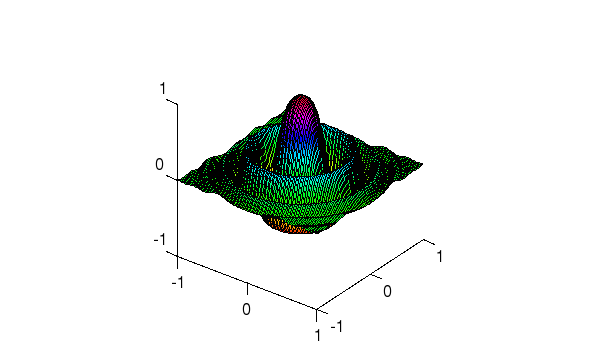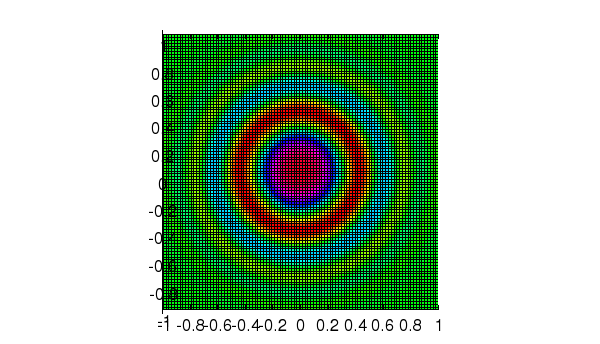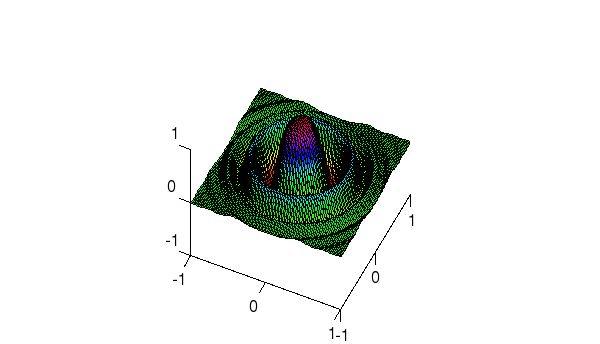VIEW Set Graphical View
Section: Handle-Based Graphics
Usage
Theview function sets the view into the current plot.
The simplest form is
view(n)
where n=2 sets a standard view (azimuth 0 and elevation 90),
and n=3 sets a standard 3D view (azimuth 37.5 and elevation 30).
With two arguments,
view(az,el)
you set the viewpoint to azimuth az and elevation el.
Example
Here is a 3D surface plot shown with a number of viewpoints. First, the default view for a 3D plot.--> x = repmat(linspace(-1,1),[100,1]); --> y = x'; --> r = x.^2+y.^2; --> z = exp(-r*3).*cos(5*pi*r); --> surf(x,y,z); --> axis equal --> view(3) Warning: Newly defined variable xlim shadows a function of the same name. Use clear xlim to recover access to the function Warning: Newly defined variable ylim shadows a function of the same name. Use clear ylim to recover access to the function Warning: Newly defined variable zlim shadows a function of the same name. Use clear zlim to recover access to the function

Next, we look at it as a 2D plot
--> surf(x,y,z); --> axis equal --> view(2) Warning: Newly defined variable xlim shadows a function of the same name. Use clear xlim to recover access to the function Warning: Newly defined variable ylim shadows a function of the same name. Use clear ylim to recover access to the function Warning: Newly defined variable zlim shadows a function of the same name. Use clear zlim to recover access to the function

Finally, we generate a different view of the same surface.
--> surf(x,y,z); --> axis equal --> view(25,50); Warning: Newly defined variable xlim shadows a function of the same name. Use clear xlim to recover access to the function Warning: Newly defined variable ylim shadows a function of the same name. Use clear ylim to recover access to the function Warning: Newly defined variable zlim shadows a function of the same name. Use clear zlim to recover access to the function

